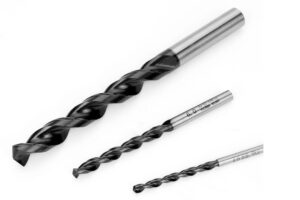Professional CNC Drilling Manufacturer in China
High-Accuracy CNC Drilling Services for Industrial Applications
 As a leading CNC drilling & Machining manufacturer in China, we specialize in precision hole-making solutions for metal, plastic, and composite materials. Our computer-controlled drilling systems deliver ±0.01mm positional accuracy for applications ranging from aerospace components to automotive fixtures and electronic enclosures.
As a leading CNC drilling & Machining manufacturer in China, we specialize in precision hole-making solutions for metal, plastic, and composite materials. Our computer-controlled drilling systems deliver ±0.01mm positional accuracy for applications ranging from aerospace components to automotive fixtures and electronic enclosures.
Why Choose Our CNC Drilling Services?
1. Advanced Drilling Technology
- CNC vertical/horizontal machining centers with automatic tool changers
- Deep hole drilling (up to 30× diameter depth)
- Micro-drilling capabilities (from Ø0.3mm)
- Gun drilling for precision straight holes
- Multi-spindle drilling for high-volume production
2. Material Expertise
We drill all engineering materials including:
| Material Type | Drilling Challenges | Our Solutions |
|---|---|---|
| Aluminum Alloys | Chip adhesion | Specialized drill geometry |
| Stainless Steel | Work hardening | Coolant-through drills |
| Titanium | Heat generation | Low-RPM, high-feed strategy |
| Carbon Fiber | Delamination | Diamond-coated tools |
| Engineering Plastics | Melting | Sharp-point drills |
3. Precision Capabilities
- Hole diameter range: Ø0.3mm to Ø50mm
- Positional tolerance: ±0.01mm
- Surface finish: Ra 0.8-3.2μm (better finishes available)
- Straightness tolerance: 0.01mm per 100mm
4. Production Flexibility
- Prototype drilling: 1-50 pieces
- Small batch: 50-1,000 pieces
- Mass production: 1,000+ pieces
- Just-in-time delivery available
Our CNC Drilling Equipment
Machinery Specifications
| Machine Type | Max Drilling Capacity | Positioning Accuracy |
|---|---|---|
| CNC Vertical Mills | Ø32mm | ±0.005mm |
| Deep Hole Drillers | Ø30mm×1000mm | ±0.02mm/300mm |
| Micro-Drilling Centers | Ø0.3mm | ±0.002mm |
| Multi-Spindle Machines | 24 spindles | ±0.01mm |
Tooling Technology
- Carbide drills with TiAlN coating
- Indexable insert drills for large diameters
- Coolant-through tooling systems
- Custom drill bit fabrication service
Specialized Drilling Services
1. High-Precision Hole Patterns
- PCB fixture plates
- Fuel injection components
- Hydraulic valve blocks
2. Complex Angled Holes
- 30°-90° compound angles
- Cross-hole intersections
- Radial hole patterns
3. Thread Drilling Solutions
- Thread milling prep holes
- Form tapping drill sizes
- Spiral flute chip evacuation
Quality Assurance Process
✔ Pre-production tool path verification
✔ In-process SPC monitoring
✔ Post-process CMM inspection
✔ Surface roughness testing
✔ Go/no-go gauge checking
Industries We Serve
Aerospace & Defense
- Aircraft structural components
- Missile guidance parts
- Satellite mounting plates
Automotive
- Engine blocks
- Transmission housings
- Brake system components
Energy Sector
- Turbine blades
- Heat exchanger plates
- Oilfield tooling
Electronics
- Semiconductor fixtures
- RF waveguide components
- Enclosure ventilation patterns
Competitive Advantages
✅ 50+ CNC drilling machines in our facility
✅ ISO 9001 & AS9100 certified processes
✅ 15 years of drilling expertise
✅ 30% cost savings vs. domestic suppliers
✅ 48-hour standard turnaround
Start Your Drilling Project Today
Submit your technical drawings to receive:
- Instant quotation within 4 hours
- Free DFM analysis report
- Recommended drilling strategy
Contact our drilling specialists to discuss your hole-making requirements and discover how we can optimize your manufacturing process.






